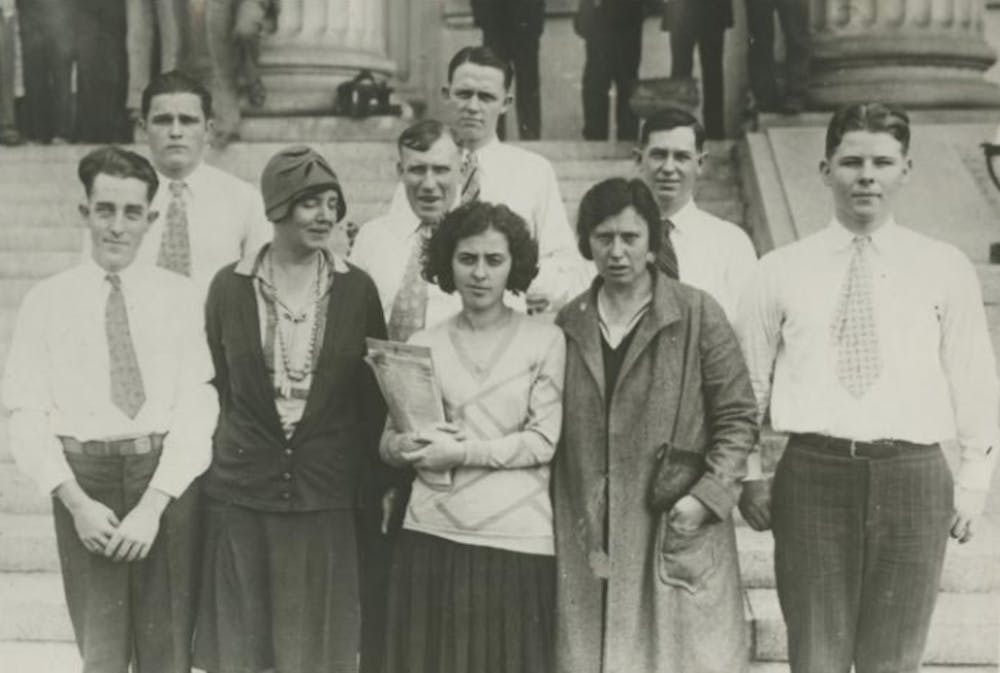The Loray Mill was three times larger than its next-largest competitor in the already mill-heavy Gaston County. In 1928, the mill had cut its workforce by more than a third while maintaining pre-cut production quotas. Aside from the quotas, a new system of “piecework pay” was implemented, in which workers were paid by the number of products they produced rather than by the hours they worked.
In March of that year, workers at the mill launched a strike, but dispersed after an unpopular superintendent was fired.
Unfortunately, the poor relationship between management and labor continued. Fed up with these conditions, several workers at the mill formed a union. On March 25, five employees were fired for their union membership, and on March 30, the workers responded by voting to go on strike.
Meanwhile, in nearby Bessemer City, workers at the American mill were preparing their own strike. That mill’s record was particularly egregious, with the wages there being low even by the standards of the day. As Loray’s workers had done, the workers at the American plant walked out, with Ella May Wiggins joining them.
After months of violence and conflict between the striking workers and management, things started to fray. The leader of the strike, union organizer Fred Beal, attempted to downplay the NTWU’s more (at the time, anyway) radical platforms of racial equality in order to appeal to the still largely racist workforce of the mills.
A former Sunday school teacher, Beal also deliberately swept the NTWU’s anti-religion principles under the rug, but was undermined by higher-ranking unionists sending in operatives advocating for complete revolution and atheism. Many of the workers were increasingly turned off by this rhetoric, causing a collapse in the number of strikers.
In addition to these shortcomings, a brawl between local unionists and police led to the death of Gastonia’s chief of police and the consequent arrest of dozens of unionists. Despite all of this, Wiggins continued to work for the Union; she wrote and sang songs to help gain support, and participated in local protests.
As a part of her efforts, Ella May Wiggins and several other union activists planned a rally in Gastonia on Sept. 14, 1929. In preparation, 2,000 armed locals blocked pathways into the city, including the one on which Wiggins and her comrades were traveling.
Wiggins and other organizers were eventually stopped and turned around by the blockade. Sometime later, another group of anti-union vigilantes swerved their car around the organizers’ truck, causing it to crash. The vigilantes then poured out of the vehicles, emptying their weapons into the unionists. Wiggins was shot in the spine and taken to a nearby home where she quickly died from her wounds.
The response to her murder was sharp. Frank Porter Graham, a UNC professor and future UNC System president, wrote in a letter to a friend that the vigilantes who gunned her down prided themselves on their “Americanism” while murdering someone in cold blood for their beliefs.
Unlike with the previous strikes, some changes materialized after Wiggins’ death — conditions were somewhat improved and working hours were reduced, but not to the levels the strikers demanded. The men who allegedly killed Wiggins were brought to trial, but were never convicted.
The labor movement today
To get the day's news and headlines in your inbox each morning, sign up for our email newsletters.
92 years after the Loray Mill strike, North Carolina remains one of the least — if not the least — unionized states in the country. So-called “right-to-work” laws, or laws that bar unions from forcing workers to pay dues, causing non-paying workers to receive union benefits, have strangled unions in the state for decades.
And though strikebreakers and violent mobs aren’t gunning down unionists in the streets, the issues of inadequate wages, poor working conditions and automation continue to harm workers and their ability to live their lives to the fullest extent possible.
All of this is causing many workers in North Carolina and elsewhere to heed the words of Ella May Wiggins’ poem, "Mill Mother's Lament":
But understand, all workers,
Our union they do fear,
Let’s stand together, workers,
And have a union here.
@themikenaean
opinion@dailytarheel.com



